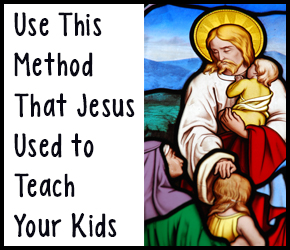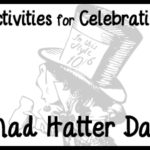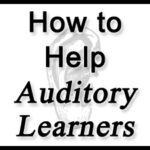He knew how to reach his audience and make the concepts he was trying to convey to them clear.
Of course, being God, definitely gave him a distinct advantage when it comes to knowing HOW to teach well.
After all, God made us. He made our minds. He knows how they work. Therefore, it would stand to reason that
He would know the best method for helping us understand something.
Since Jesus was (and is, and ever will be) God, He knew the best technique for teaching.
What is this wonderful method that He used?
Stories.
He told stories, otherwise known as parables, to teach.
Why did He use this method?
Because, generally speaking, the mind works in pictures.
Let me demonstrate that for you.
Right now, I want you to think of a dog.
Alright, what popped into your head?
Was it the letters d-o-g or was it a picture of a dog?
It was a picture, wasn’t it?
That’s how the brain works and you, as a teacher of your children, can use that to your advantage.
Here’s how.
When it comes to teaching difficult abstract concepts to your children or teens, try telling a story to convey the meaning.
Let me give you an example of this.
When I was a long-term sub for an Algebra teacher, I had to teach the teens about positive and negative slope. I told them the following story to help them out. The sentences in parentheses will convey what I drew on the board as I told the story.
(First, I drew a stick figure walking to the right with a line under him.)
“This is George. He ALWAYS walks to the right. He doesn’t know how to walk any other way.”
(To the right, I drew George again, smiling, and drew a straight line going up at about a 45 degree angle.)
“George LOVES to climb up. He loves hills and mountains that go up. It brings him closer to the sky. So George loves positive (I drew a plus sign near the line going up) slopes.”
(To the right, I drew George again, frowning, and drew a straight line going down at about a 45 degree angle.)
“George HATES going down. He hates valleys. He’s afraid he’ll trip on his own feet and fall down. So George hates negative (I drew a minus sign near the line going down) slopes.”
* * *
See how this works?
Imagery like this can be very powerful when it comes to learning. It works for not only comprehension, but memorization as well. I highly recommend it.
Stories are also the reason why some programs and curricula are so effective. They help children “see” the concepts in their minds. Below is a list of some resources by subject that use stories to teach.
*This post contains paid links. I earn a small commission from the sale of products purchased via these links. Please see my disclosure for details.
Math
Life of Fred by Stanley Schmidt
Times Tales: Times Tables Made Easy! by Jennie Von Eggers
Times Tables the Fun Way by Judy Liautaud
Grammar
Humpties: Parts of speech with “eggceptional” personalities by Ellen Hajek
Science
The Magic School Bus by Joanna Cole and Bruce Degen
History
Story of the World by Susan Wise Bauer
I’m sure there are more, but at least that gives you a sampling of some products that use the story method. If you know of some others, feel free to share them below.







